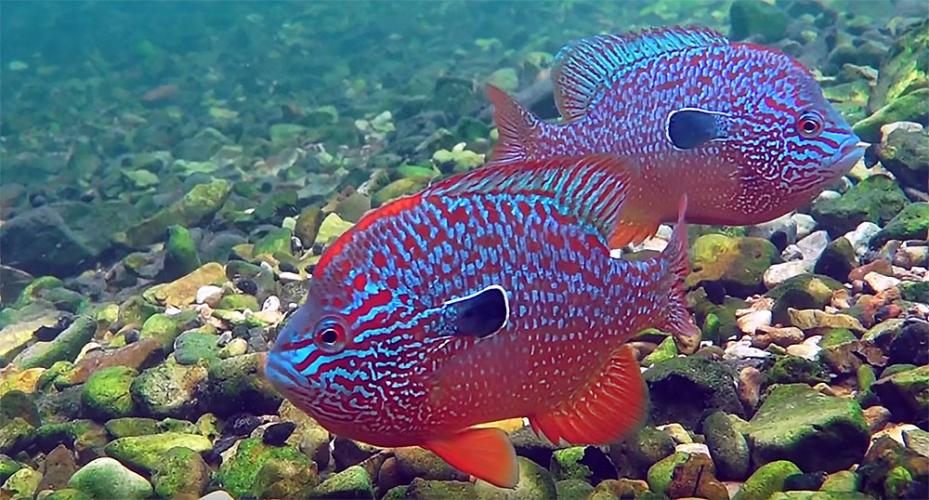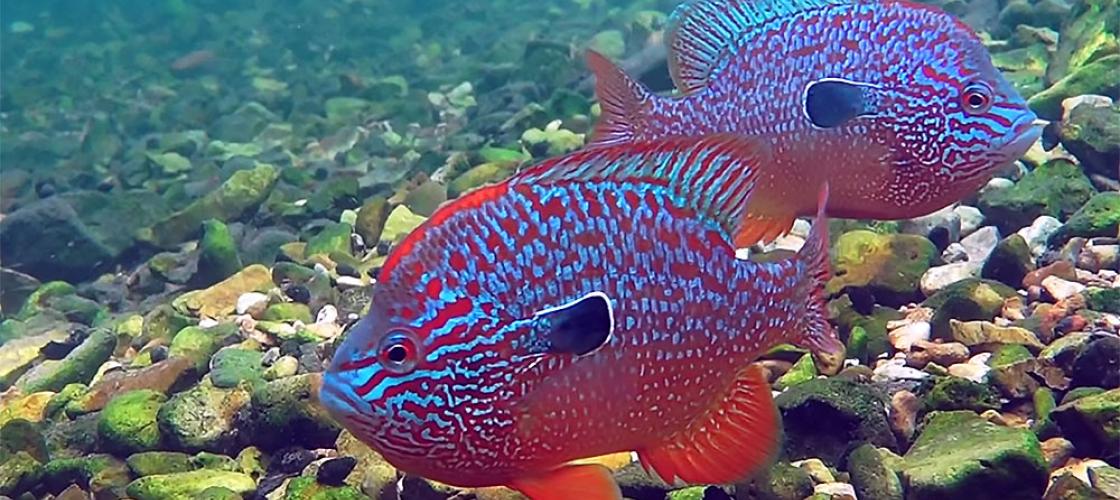Color is important to fish. It’s used for camouflage, mate selection and defense. While easily seen in tropical aquarium fish, our native fishes also have special colors.
In camouflage, the color of the fish imitates or blends with its surroundings. Most fish use countershading. A counter-shaded fish has a light-colored underside and darker topside. Counter-shaded fish blend into their surroundings from wherever they’re viewed. The light underside blends with the bright water surface when the fish is viewed from below. The dark backside blends with the stream or pond bottom when the fish is viewed from above. Catfish are counter-shaded.
Color is also used to attract mates. The redbelly dace and the bleeding shiner are ordinarily nondescript minnows. But a spectacular color change takes place in the males during breeding season. Bright red markings appear on the undersides of the dace and in the fins of the bleeding shiner. Another small fish is the orange-throat darter. Its color intensifies with alternating blue-green bars and brick-red blotches on the sides and bright orange beneath the throat and undersides. The longear sunfish is one of Missouri’s showiest.
Fish are also able to change their colorations based on mood. A threatening coloration or pattern can be used to ward off others from their territory.
For most fish species spring and summer are the seasons when breeding coloration is at its peak.
Missouri’s Fish
Missouri is home to more than 200 kinds of fish.
- Different waters have their own characteristic fish. Darters generally prefer rocky riffles in clear Ozark streams. The sickle fin chub is found only in the muddy, turbulent waters of the Missouri and lower Mississippi rivers. Learning about fish means learning about their habitats.
- Except for lampreys which represent a very primitive group of vertebrates that lack jaws. Missouri’s fishes are all “bony fishes,” a group that includes nearly all the fish in the world today except for sharks and rays.
- In Missouri, fishing is a more than $400 million industry, including tackle, permits, bait, guides, boats, boat rentals, food, lodging and transportation. It is an activity that draws many non-fishers into the outdoors, too!
In Missouri, anyone with a fishing permit can possess native non-game species in aquaria, if they are collected according to the rules outlined in the Wildlife Code of Missouri.
Learn more about Missouri's fish with MDC's Field Guide.


Recent Posts
























